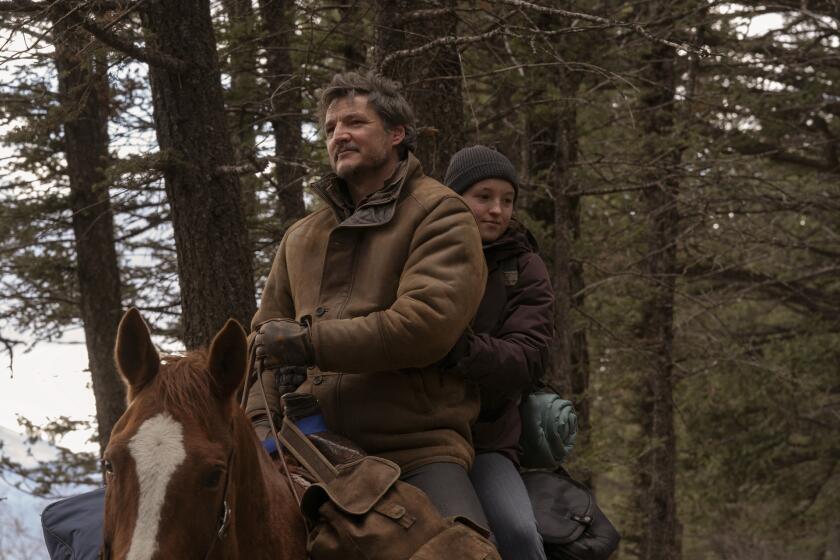The Accessible, Melodic Samuel Barber
- Share via
A dozen years ago, there was much talk about a “New Romanticism” in music, a return to “traditional values” having to do not with family and morality but with tonality.
Such otherwise unrelated American composers as George Rochberg, David del Tredici and John Corigliano sought to make music more “accessible” via unambiguous tonality and the reintroduction of that most audience-attracting of virtues, melody.
Writing tonal music is easy. Writing strong melodies--tunes that remain in the mind--is not.
The kind of graspable modern music espoused by those composers was in existence already: the scores of Samuel Barber, which have been enjoying a considerable return to favor since his death a decade ago.
Barber’s 1941 Violin Concerto has the ingredients that have eluded those later seekers of accessibility. The reason is both simple and endlessly complex: He knew how to write a big, broad melody with the requisite sad-sweet effect, as evidenced in the principal themes of both the first and second movements of this concerto.
With its built-in lyric lushness, Barber’s Violin Concerto takes to a variety of interpretive approaches. In a new recording, Chinese-born Hu Kun--a protege of Yehudi Menuhin--plays it with clear-cut rhythmic precision and a rich variety of tone, including pianissimos of astonishing clarity and solidity. Workmanlike backing is provided by the English Symphony Orchestra under William Boughton (Nimbus 5329).
The coupling is another modern work of the tonal persuasion, Leonard Bernstein’s increasingly popular 1956 Serenade, which is given a lively, strongly profiled reading by Hu (who was born in 1963).
One of the Barber concerto’s early champions was the Los Angeles-based American violinist Louis Kaufman. His 1951 recording, with Walter Goehr perceptively leading the Lucerne Festival Orchestra, returns in a handsomely remastered CD edition (Music & Arts 667).
Kaufman conveys the spirit and sound of an earlier generation of virtuosos. Furthermore, his affectionate interpretation, while hardly lacking in tension, points up the Brahmsian influence on Barber, particularly in the second movement.
Kaufman employs a wider vibrato than Hu, some tasteful portamento and somewhat slower tempos. It is playing of faultless control that also mines a vein of expressivity that had gone out of style by the time the recording was made.
The program further includes the 1952 Violin Concerto of Swedish composer Lars-Erik Larson, Romantic but with a sprinkling of barbed harmonies, and Vaughan Williams’ bracingly Neoclassical “Concerto Accademico” (1925).
Again, Kaufman’s performances are right on the mark: tactfully schmaltzy for Larson, buoyant, tighter, lighter for Williams.
What the Violin Concerto is to Barber’s instrumental works, “Knoxville: Summer of 1915” is to his vocal output. And the latest recording of “Knoxville”--Barber’s 1947 setting of James Agee’s evocation of growing up sensitive in the South--is a knockout (Telarc 80250).
Soprano Sylvia McNair brings to its dramatic outbursts the bite lacking in Dawn Upshaw’s uniformly sweet-toned edition. McNair’s singing is a marvel of purity and accuracy, allied to a keen appreciation of the subtle inflections of the Agee texts.
Her efforts are seconded by the finely honed playing of the Atlanta Symphony--the upper strings are ravishingly sweet--under Yoel Levi’s strongly detailed, rhythmically supportive direction of a score in which conductors are too often content with, or even intent on, producing a limp, misty wash.
Levi and his Atlantans bring similar virtues to a program that also includes Barber’s frothy “School for Scandal” overture, the brooding First and Second Essays, “Medea’s Dance of Vengeance” and the Adagio for Strings.
A less frequently encountered component of Barber’s creative personality, his Neoclassical leanings, is exemplified in the witty “Capricorn Concerto,” written in 1944, between the Violin Concerto and “Knoxville.” It is, in fact, a concerto grosso with solo flute, oboe and trumpet pitted against a string band.
In a reissue (Mercury Living Presence 434-702, mid-price) of the justly celebrated 1963 recording, Howard Hanson leads the Eastman-Rochester Orchestra in Barber’s charmer as well as in Piston’s lively, lovely “Incredible Flutist,” the Gallic daydreams of Griffes’ “Poem” for flute and orchestra and pleasant, determinedly tonal 20th-Century trifles by Kent Kennan, William McCauley and William Bergsma.
More to Read
The biggest entertainment stories
Get our big stories about Hollywood, film, television, music, arts, culture and more right in your inbox as soon as they publish.
You may occasionally receive promotional content from the Los Angeles Times.










